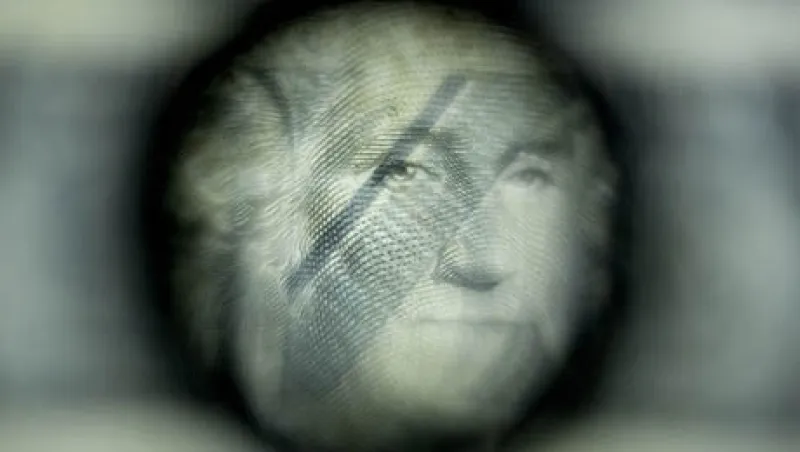It’s been an upward climb for the U.S. dollar in recent months against the euro and the yen. Amid talk of Federal Reserve tightening, many currency market participants expect the greenback’s strength to continue, though at a slower pace.
The dollar has benefited from divergent monetary policies, as the European Central Bank and the Bank of Japan have intensified their easing while the Federal Reserve is moving toward tightening. Stronger economic growth and higher interest rates in the U.S. than in Japan and Europe have also bolstered the dollar’s power.
“I’m still a dollar bull,” says Marc Chandler, head of currency strategy for Brown Brothers Harriman in New York. “The Fed is likely to raise interest rates in September. And even if we’re wrong, the Fed is well ahead of the ECB and the Bank of Japan” in withdrawing stimulus.
This monetary policy divergence will persist at least for several more quarters, Chandler says. The ECB’s €1.1 trillion ($1.24 trillion) quantitative easing program is expected to last through September 2016, and the Bank of Japan continues to buy $100 billion of Japanese government bonds per month, far above the $80 billion of bonds the Fed purchased monthly during its last round of quantitative easing. If the Fed does begin raising interest rates in September — it has kept the federal-funds rate at a record low since December 2008 — the euro, according to Chandler, could test parity with the dollar. He forecasts a year-end level of $1.02 to $1.03 for the euro and 130 yen for the dollar.
Others are more cautious, particularly when it comes to dollar-euro pricing. “A lot of the euro weakness likely to stem from extraordinary ECB easing over the last year is already in the price,” says Robert Lynch, head of developed-markets currencies strategy for HSBC Securities (USA) in New York. The bank’s forecasters have a $1.05 target for the euro at year-end. The euro hit a 12-year low of $1.0458 on March 13 but has bounced back to $1.13 as of June 8. After touching a seven-year high on December 5 of 121.46 yen to the dollar, the Japanese currency settled around 120 until June 1, when it jumped to a 12-year high of 124.77 yen versus the greenback.
Guy LeBas, chief fixed-income strategist at Janney Montgomery Scott in Philadelphia, believes there’s more room for the dollar to gain against the yen than against the euro. That’s because of what LeBas calls the “mayhem going on in the Bund market.” The yield on ten-year Bunds dropped by 61 basis points since hitting an all-time low of 0.07 percent on April 20. By June 5, however, yields had climbed back to 0.851 percent, compared with 2.37 percent for ten-year U.S. Treasuries. Technical rather than fundamental factors — “shorts taking advantage of a trend more than optimistic economic expectations in Europe” — have fueled that move, LeBas notes. But if European interest rates rise rapidly, that will favor the euro.
“Based on monetary policy divergence, we would see the dollar moving toward parity within 12 months. But it’s hard to figure out when the long-term theme takes over from the short-term technicals for Bunds,” LeBas says. As for the yen, he thinks the dollar faces no such conundrum there because technical factors in the Japanese government bond market are much more favorable than in the Bund market, meaning Japanese interest rates will remain depressed. HSBC’s Lynch says there is even a chance that the Bank of Japan will increase its quantitative easing volumes, though he says that the dollar’s current level already reflects that possibility to a large extent.
As for risks to the stronger-dollar scenario, a failure by the U.S. economy to rebound from the weak first quarter could cause problems, says Chandler at Brown Brothers Harriman: “A few months of bad jobs numbers would probably stay the Fed’s hand,” putting downward pressure on the greenback. Contrarian Chris Rupkey, chief financial economist at Bank of Tokyo-Mitsubishi UFJ in New York, sees the dollar slumping even without U.S. economic weakness. “The dollar’s trend is pretty much over,” he contends. He sees the euro around $1.15 and the dollar around 120 yen at year-end.
Get more on foreign exchange.







